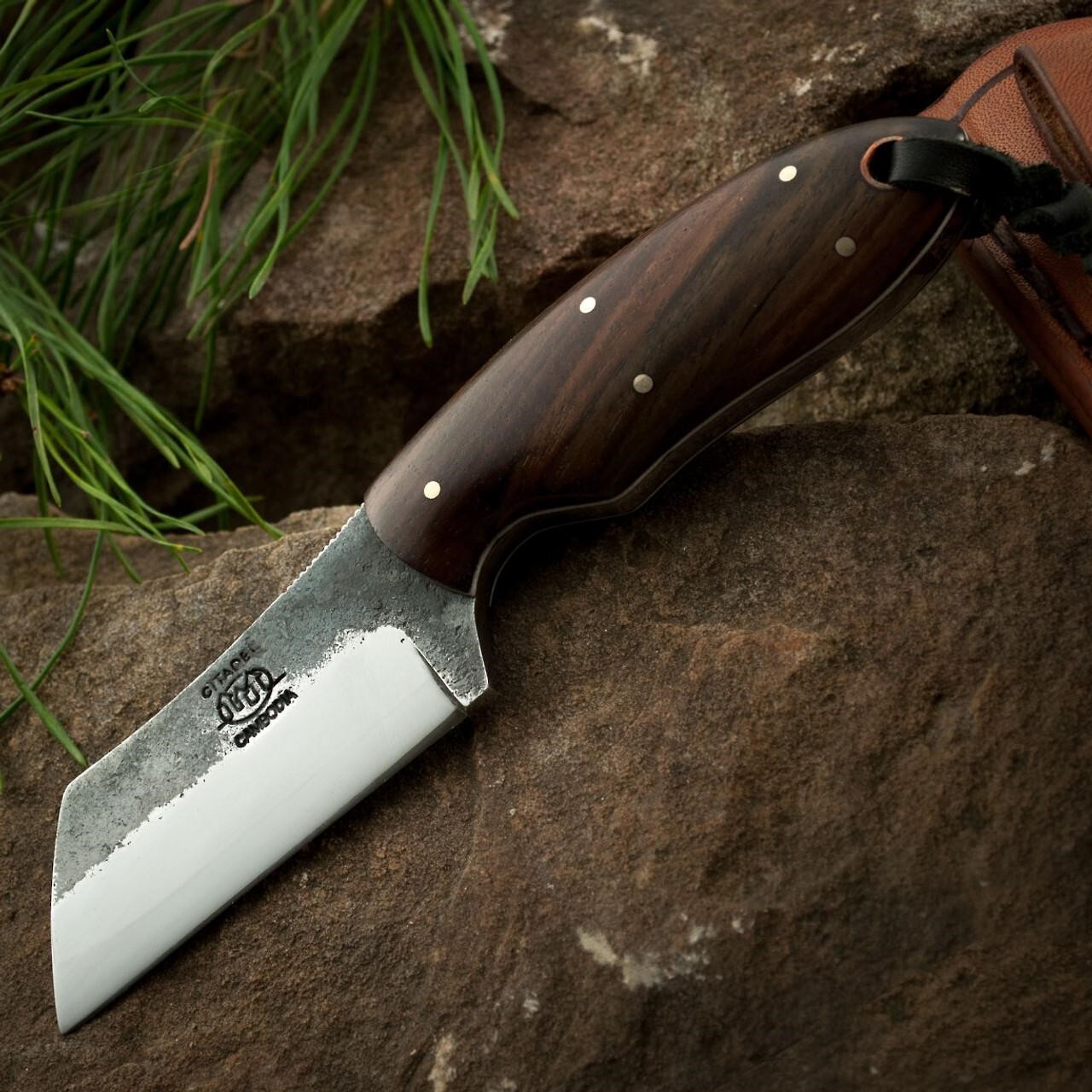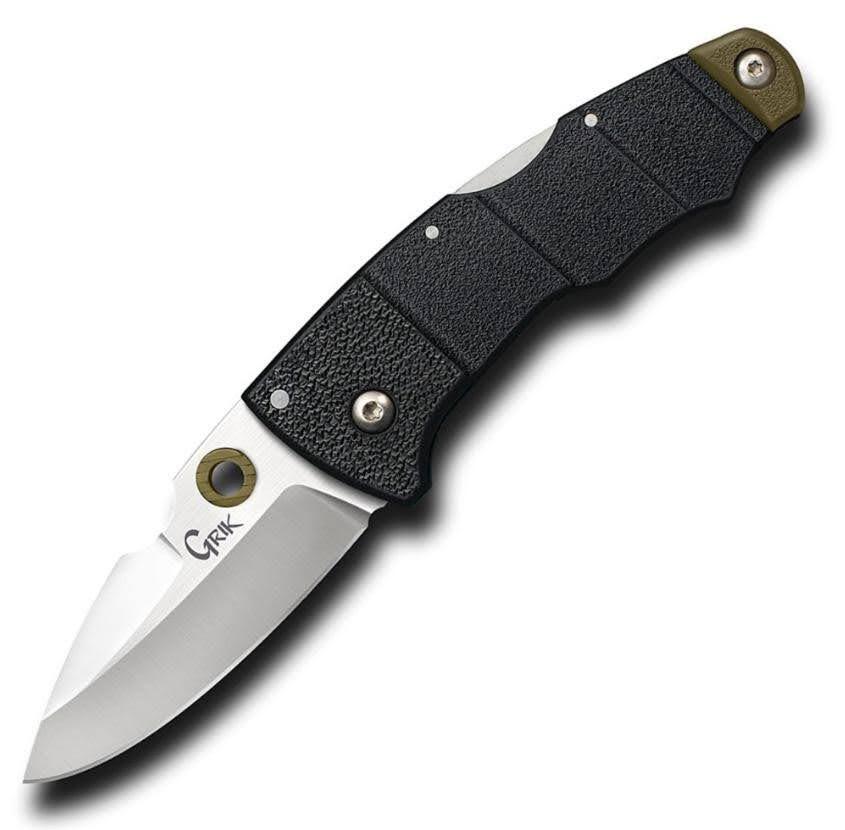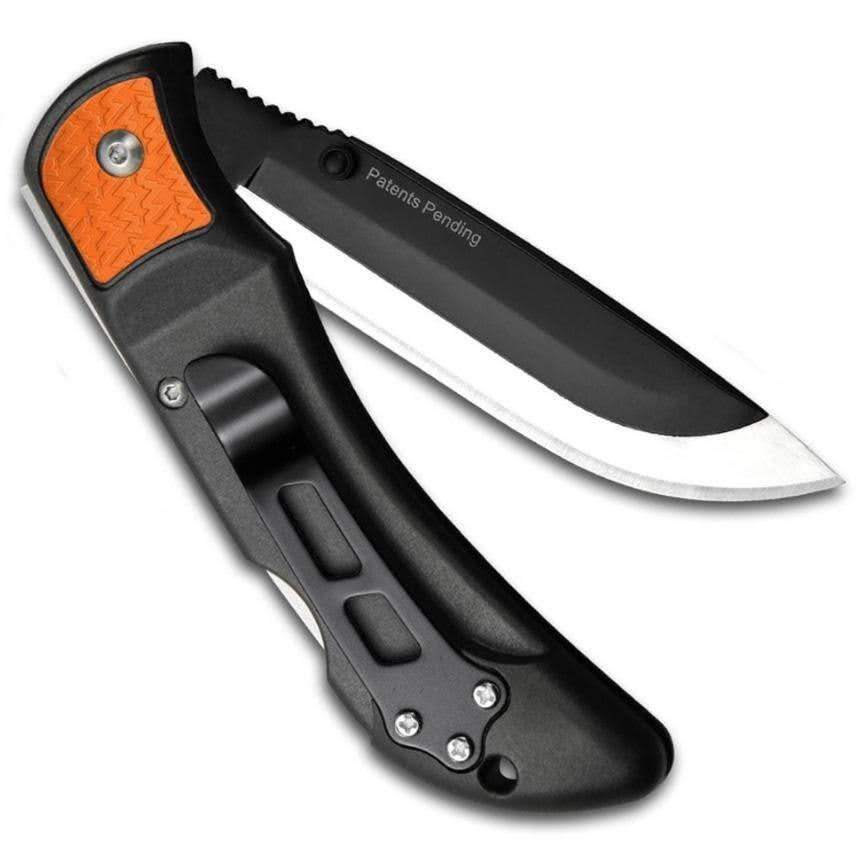Essential EDC Knives: Choosing the Right Blade for Every Day Carry
30th Jun 2025

Citadel Vannak V EDC/Hunting Knife
An everyday carry (EDC) knife is a trusted companion, ready to tackle tasks ranging from mundane to critical. Whether you’re opening packages, preparing food, or handling outdoor challenges, the right EDC knife combines practicality, durability, and portability. With numerous options available, selecting the ideal blade requires understanding key features, materials, and maintenance needs that are tailored to your lifestyle.
In this blog, we will guide you on how to choose an EDC knife that suits your daily routine, regardless of your job, hobby, or lifestyle.
The Value of an EDC Knife
An EDC knife is a compact, versatile tool designed for daily carry. It’s not just about utility, it’s about preparedness. From cutting rope to slicing fruit or handling emergencies, a well-chosen knife enhances efficiency and confidence. The ideal EDC knife feels like an extension of yourself, striking a balance between functionality and ease of carry.
Critical Features to Evaluate
Choosing an EDC knife means focusing on features that align with your needs. Here’s what to consider:
Blade Shape
The blade’s shape defines its purpose. Common EDC blade types include:
- Drop Point: Versatile, with a strong tip for slicing and piercing, ideal for general use.
- Clip Point: Slimmer tip for precision tasks like detailed cutting or piercing.
- Tanto: Robust with a reinforced tip, perfect for piercing tough materials.
- Sheepsfoot: Blunt tip for safety, great for slicing or controlled cuts, favored by EMTs.
Most EDC users will find that a drop point or clip point blade offers the best all-around performance. Match the shape to your primary tasks for optimal results.
Blade Size
EDC knives typically feature blades between 2.5 and 4 inches. Smaller blades (2.5–3 inches) are discreet and lightweight, ideal for urban environments or areas with strict carry laws. Larger blades (3.5–4 inches) provide more cutting power for outdoor or heavy-duty tasks. Always check local regulations, as blade length restrictions vary from one area to another.
Locking Mechanism
A reliable lock ensures safety during use. Popular options include:
- Liner Lock: A metal liner secures the blade, offering reliability and ease of use.
- Frame Lock: Uses the handle’s frame for a sturdy lock, great for heavy tasks.
- Lockback: A spine-mounted lock, durable for demanding applications.
- Slip Joint: Non-locking, common in traditional knives, best for light tasks.
Liner or frame locks are excellent choices for most everyday carry (EDC) users.
Opening Mechanism
How a knife opens impacts its usability:
- Manual: Requires thumb studs, nail nicks, or two hands, often budget-friendly.
- Assisted Opening: A spring aids quick, one-handed opening, ideal for fast access.
- Automatic: Opens with a button, but may be restricted in some regions.
Assisted-opening knives are popular for their speed and ease, especially for one-handed tasks.
Carry Options
A pocket clip or lanyard hole enhances portability. Look for adjustable or reversible clips for tip-up or tip-down carry. Deep-carry clips keep the knife low-profile, perfect for discreet urban carry.
Choosing the Right Materials
The materials in an EDC knife affect its performance, weight, and longevity. Here’s a breakdown:
Blade Materials
- Stainless Steel: Corrosion-resistant and low-maintenance. Common steels include 440C (affordable, durable), VG-10 (sharp and corrosion-resistant), and S30V (excellent edge retention).
- Carbon Steel: Holds a sharper edge but is prone to rust. D2, a semi-stainless steel, offers a balance of sharpness and toughness.
- Premium Steels: Steels like CPM-S35VN or M390 offer superior edge retention and durability, but are more expensive.
For most users, mid-range stainless steels like VG-10 or S30V offer a great mix of performance and value.
Handle Materials
- G10 and FRN: Lightweight, durable, and grippy, ideal for rugged environments.
- Micarta: Comfortable and grippy, especially in wet conditions, improving with use.
- Titanium: Lightweight and strong, but more expensive, suited for premium knives.
- Aluminum: Corrosion-resistant and sleek, great for urban carry.
- Wood or Bone: Stylish but less durable, best for light use or aesthetic appeal.
Select a handle based on your environment; many recommend G10 or Micarta for outdoor use, and titanium or aluminum for a polished look.
Tailoring Your Knife to Your Lifestyle

Your daily routine shapes the ideal EDC knife. Here’s how to match a knife to your needs:
Urban Professional
Discretion is key in city settings. A compact 2.5–3-inch drop point or clip point blade in stainless steel (like VG-10) pairs well with a titanium or aluminum handle for a sleek look. A deep-carry clip and liner lock ensure portability and safety for tasks like opening mail or cutting packaging.
Our Atlanta Cutlery Pick For You: Drop Point Blade with Brass Guard .
Outdoor Enthusiast
For hiking, camping, or fishing, durability is paramount. A 3.5–4-inch drop point or tanto blade in S30V or D2 steel handles tough tasks like cutting kindling or preparing fish. A G10 or Micarta handle provides a secure grip in wet conditions, while a frame or lockback mechanism adds extra strength.
Our Atlanta Cutlery Pick For You: Cobra Steel Iris Leaf .
Tradesperson or DIYer
Those working with their hands need a robust knife. A 3–3.5-inch clip point or sheepsfoot blade in 440C or D2 steel excels at cutting materials or stripping wires. A G10 handle and frame lock provide durability and security for demanding tasks.
Our Atlanta Cutlery Pick For You: CRKT Facet™ Framelock .
Casual or Minimalist User
For low-profile carry, a small (2.5-inch or less) manual-opening or slip-joint knife is ideal. FRN or Micarta handles keep weight down, and a simple design ensures compliance with local laws.
Our Atlanta Cutlery Pick For You: Boker Magnum Shiny EDC .
Maintaining Your EDC Knife
Proper care keeps your knife sharp and reliable. Follow these maintenance tips:
Cleaning
- Wipe the blade after use to remove moisture, dirt, or oils.
- For carbon steel, apply a thin layer of mineral oil to prevent rust.
- Clean the handle and pivot with mild soap and water, drying thoroughly.
Sharpening
- Use a sharpening stone or system to maintain the edge.
- Match the factory angle (typically 20–25 degrees for EDC knives).
- Sharpen lightly and regularly to preserve blade material.
Storage
- Store in a dry environment to avoid corrosion.
- Use a sheath or pouch for loose storage, or keep the clip engaged for quick access.
- Avoid prolonged exposure to moisture or extreme heat.
Lubrication
- Apply knife-specific lubricant to the pivot for smooth operation.
- Check and tighten pivot screws periodically, avoiding over-tightening.
Navigating Legal Restrictions

Outdoor Edge RazorLite EDC Knife .
Before carrying an EDC knife, research local laws. Blade length, locking mechanisms, and automatic knives may be restricted. For example, some cities limit blade length to 3 inches, and automatic knives are banned in certain regions. Carry responsibly to stay compliant.
Selecting Your Ideal EDC Knife
Finding the right EDC knife comes down to understanding your needs through the blade shape, size, materials, and carry style. Whether you’re navigating urban life or exploring the outdoors, the perfect knife is out there, ready to become your trusted tool.
Discover a wide range of high-quality EDC knives at Atlanta Cutlery. From compact urban folders to rugged outdoor blades, our collection has something for every lifestyle. Visit our website today at www.atlantacutlery.com to find the knife that’s right for you and elevate your everyday carry!


 Gift Cards
Gift Cards